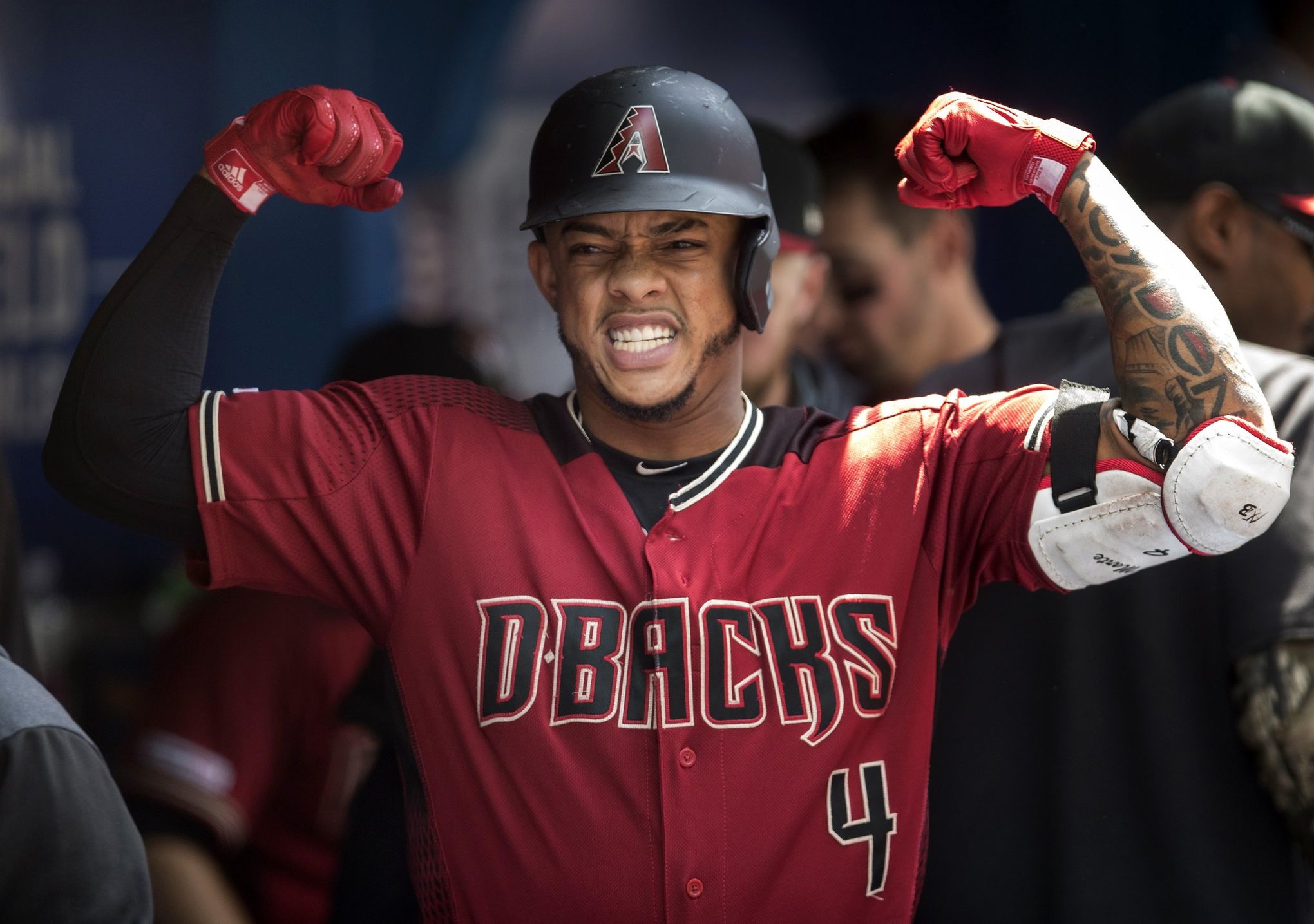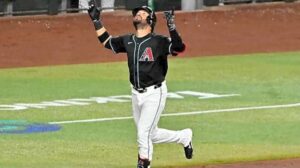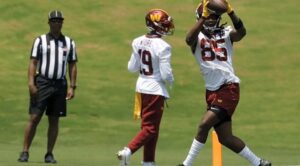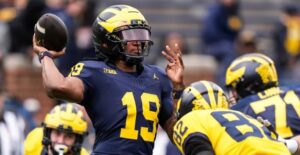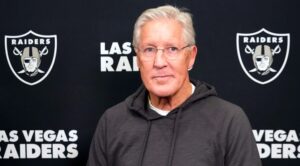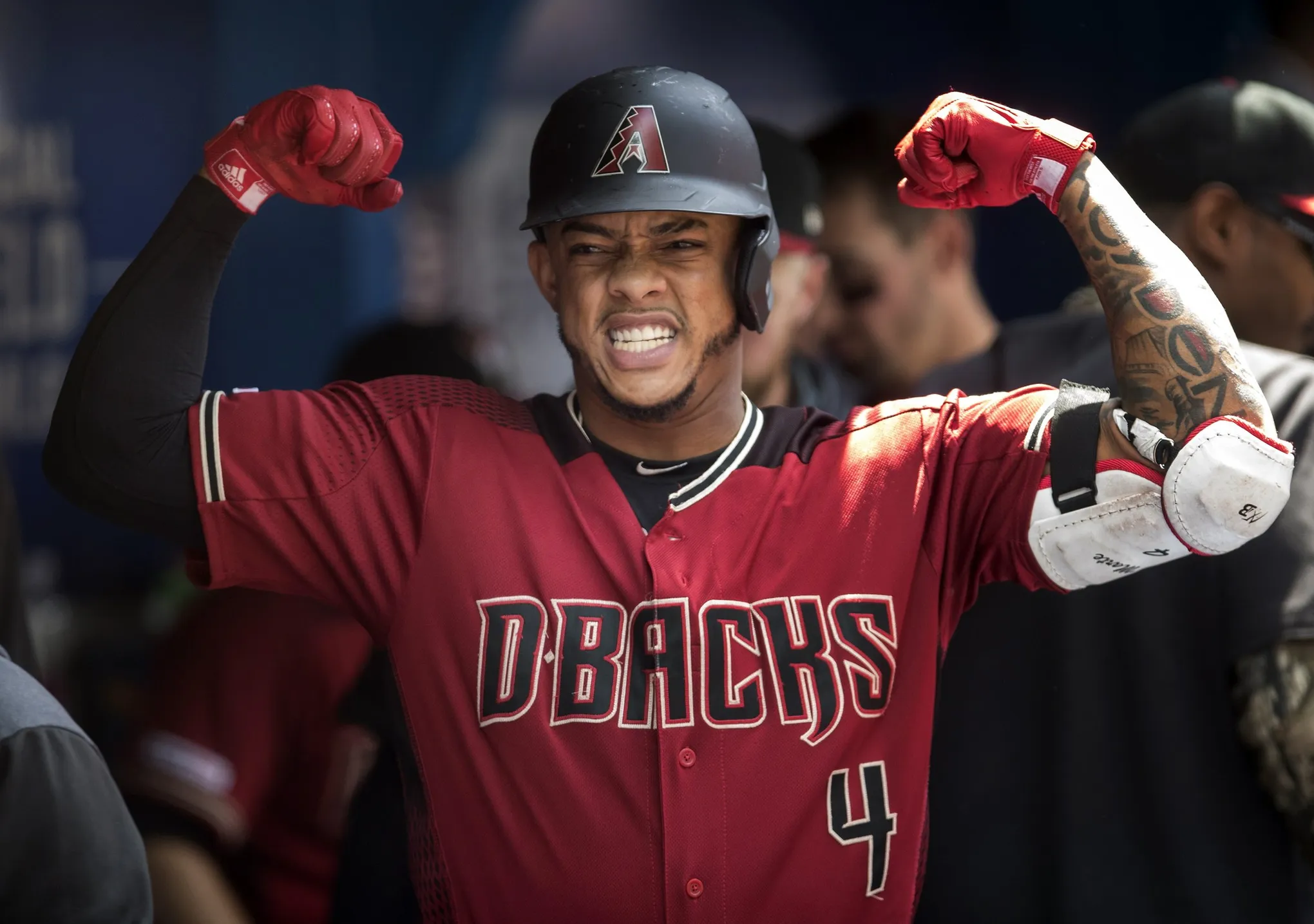
With JP Crawford returning, there’s a sense of optimism as the team strengthens with his reentry. His injury-related absence was significant, and a healthy, effective JP Crawford greatly enhances the team compared to relying more on backups, particularly given the hitting struggles of players like Luis Urias.
Another discussion point is whether the Mariners should consider keeping Dylan Moore at shortstop and moving JP Crawford to second base, but that’s a debate for another time.
However, Crawford’s return also brings to mind a larger historical context. Rewinding to 2017, the Mariners traded Ketel Marte and Taijuan Walker to the Diamondbacks in exchange for Mitch Haniger and Jean Segura. A couple of years later, the Mariners traded Jean Segura to the Phillies for JP Crawford.
This raises an intriguing question: If Jerry Dipoto and Justin Hollander could revisit and potentially redo these trades, would they? Are they content with where the team has ended up, or might they reconsider that initial trade and think, “maybe we’d rather not”?
To explore this, let’s examine the events and outcomes since that original 2017 trade to determine if the Mariners would, in hindsight, redo the trade with the Diamondbacks.
The Case Against the Ketel Marte Trade: Keeping Ketel
When Ketel Marte is at his best, he can be a standout, potentially the best player on the team. His 2019 season, when he finished fourth in MVP voting, exemplifies his capabilities. Marte posted an impressive .329/.389/.592 slash line, with 32 home runs, 39 doubles, and ten steals, all while playing above-average defense, accumulating a 6.9 WAR.
At 25 years old, Marte seemed to have unlimited potential, especially after a 3.9 WAR season the year before. It looked like the Diamondbacks had won the trade. Although the COVID-19 pandemic slowed things down, Marte’s performance in that shortened season still translated to a 4.1 WAR over a full year, proving his value once again.
After a slight downturn, Marte bounced back strongly in 2023 and 2024. He delivered a 4.9 WAR last season and has already notched a 2.7 WAR in just 48 games this year, projecting to an incredible 8.1 WAR if he plays 144 games. Letting go of a player like that is a tough decision, especially when he’s signed through his age-34 season on a favorable deal (5 years, $76 million, averaging $15.2 million per season).
Having a player of Marte’s caliber at second base, who can also play shortstop and outfield, is extremely valuable. Moreover, the Diamondbacks also benefited from Taijuan Walker, who has re-emerged as a reliable mid-range starter. Considering the value from Marte, Walker, and the 41.5 WAR they gave up in total (including Jean Segura), it’s hard to justify the trade. Marte’s near .300 average, power, speed, and versatile defense through his prime and into his early 30s make him a cornerstone player.
The Case for the Ketel Marte Trade: Doing it Again
The Mariners received significant contributions from Mitch Haniger, almost matching Marte’s output. Haniger posted a 3.1 WAR and a 6.5 WAR in his first two seasons with the Mariners, delivering the much-needed power to their lineup while maintaining a batting average in the .280s. Haniger’s combination of power and average was a crucial addition.
However, injuries and a shortened season slowed Haniger’s progress. Despite this, he still managed a 3+ WAR season in 2021, although his performance and health have been inconsistent since. His 2022 season was decent but limited to only 57 games.
Jean Segura’s time with the Mariners should not be overlooked. Despite a locker room incident with Dee Strange-Gordon, Segura performed well, hitting .302/.345/.421 and achieving a 3.7 WAR in each of his two seasons. This success allowed the Mariners to trade Segura to the Phillies for former top prospect JP Crawford. Segura continued to perform for the next four years, totaling 8.4 WAR before a downturn in his final season with the Marlins.
JP Crawford, on the other hand, has accumulated 15.1 WAR for the Mariners, serving as their charismatic leader and being on a team-friendly contract (5 years, $51 million) through 2026. While Haniger’s contributions have waned, his initial performance and Crawford’s sustained excellence and leadership have been invaluable. Crawford and Haniger together have provided the Mariners with 37.8 WAR through these interconnected moves.
In summary, the Mariners have received substantial value from the sequence of trades stemming from the original deal. Despite Marte’s individual brilliance, the collective contributions from Haniger and Crawford have significantly benefited the team, making a strong case for the trade.
Final Verdict: Would Jerry Dipoto Re-Do the Ketel Marte Trade?
After more than seven seasons, determining the clear winner of the Ketel Marte trade remains complex. The Mariners received notable value from Mitch Haniger during his productive seasons. His drive and intensity were instrumental in ending the Mariners’ playoff drought. Additionally, Haniger was re-acquired through another trade, which also brought in Polanco, a potential significant asset had he performed to expectations.
JP Crawford has been another key figure for the Mariners. His outstanding 2023 season helped carry the team through challenging stretches. As a team leader, Crawford’s presence extends beyond mere statistics—he’s charismatic, easy to root for, and exciting to watch.
However, Ketel Marte’s performance cannot be ignored. Marte, just ten months older than Crawford, is currently one of the hottest hitters in baseball. With a 21-game hitting streak and an exit velocity of 93.8 mph, he ranks among the top hitters in the league.
Considering the broader implications, such as the potential impact on other transactions and drafts, it’s difficult to assess the full extent of this trade’s influence. The Butterfly Effect might have altered subsequent events, such as drafting Kirby and Gilbert or trading for Castillo.
If all other factors remained constant, the Mariners might not re-do this trade. While JP Crawford is an excellent player and a joy to watch, having Ketel Marte in the lineup—perhaps batting in front of Julio Rodriguez—could have been even more beneficial.
Ultimately, while this decision is close and subject to change based on future performances, the inclination is that keeping Ketel Marte might have been the better option for the Mariners.
